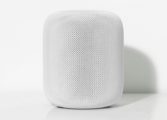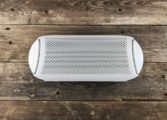Apple Laptop: A Comprehensive Overview and Analysis

Introduction
In today’s fast-paced digital world, Apple laptops have become an indispensable tool for individuals seeking robust performance and sleek design. With a loyal fan base and cutting-edge technology, Apple laptops have carved a niche for themselves in the market. This article aims to provide a thorough overview of Apple laptops, including their types, popularity, quantitative measurements, differences, and a historical analysis of their pros and cons.
1. An In-depth Overview of Apple Laptops

Apple laptops, also known as MacBooks, are a line of premium computers designed and manufactured by Apple Inc. Since the introduction of the first MacBook in 2006, Apple has consistently pushed the boundaries of innovation, offering users a seamless experience with superior hardware and software integration.
2. A Comprehensive Presentation of Apple Laptops
2.1 Types of Apple Laptops:
– MacBook Air: Renowned for its ultraportable design and long battery life, the MacBook Air is a popular choice among frequent travelers and students.
– MacBook Pro: Packed with powerful processors, stunning Retina displays, and advanced graphics capabilities, the MacBook Pro caters to professionals in creative fields.
– MacBook: The MacBook strikes a balance between portability and performance, offering a compact form factor and exceptional battery efficiency.
2.2 Popular Apple Laptop Models:
– MacBook Air (M1): The introduction of Apple’s own Silicon chip revolutionized the MacBook Air, offering exceptional speed, battery life, and efficiency.
– MacBook Pro 16-inc Designed for professionals, the 16-inch MacBook Pro boasts a larger display, improved keyboard, and enhanced performance for resource-intensive tasks.
– MacBook Pro 13-inc This compact powerhouse features a brilliant Retina display and a range of processor options, catering to various user needs.
3. Quantitative Measurements of Apple Laptops
When it comes to quantitative measurements, Apple laptops excel in various aspects:
3.1 Performance: Benchmarks consistently demonstrate that Apple laptops outperform many competitors, thanks to their powerful processors, optimized operating system, and efficient software ecosystem.
3.2 Battery Life: Apple laptops, particularly the MacBook Air, offer impressive battery life, allowing users to work or enjoy multimedia content for extended periods without needing to plug in.
3.3 Display Quality: From Retina displays to True Tone technology, Apple laptops provide users with exceptional visual experiences, characterized by vibrant colors, sharpness, and accurate color reproduction.
4. Examining the Differences Among Apple Laptops
Apple laptops differentiate themselves through various features:
4.1 Processing Power: The MacBook Air, designed for everyday tasks and portability, usually offers lower processing power compared to the MacBook Pro, which targets resource-intensive activities like video editing and 3D modeling.
4.2 Graphics Capabilities: While all Apple laptops boast impressive graphics performance, the MacBook Pro, especially the 16-inch model, stands out with dedicated AMD Radeon Pro graphics, catering to professionals in design and content creation.
4.3 Portability: The MacBook Air prioritizes portability, with its lightweight design and slender profile, making it an excellent choice for those frequently on the go. In contrast, the MacBook Pro sacrifices some portability for enhanced performance and larger displays.
5. A Historical Analysis of Apple Laptop Advantages and Disadvantages
Over the years, Apple laptops have evolved, bringing both advantages and disadvantages to users:
5.1 Advantages:
– Seamless Integration: Apple laptops are renowned for their smooth integration between hardware and software, ensuring a cohesive user experience.
– Design and Build Quality: Apple’s meticulous attention to detail results in laptops with premium aesthetics and robust build quality.
– macOS: Apple’s proprietary operating system provides a secure and user-friendly environment, with exclusive features like Siri and iCloud integration.
5.2 Disadvantages:
– Cost: Apple laptops generally come with a higher price tag compared to their Windows counterparts, making them less accessible for budget-conscious consumers.
– Limited Customization Options: Compared to Windows laptops, Apple laptops offer limited hardware customization choices, restricting individual preferences.
Conclusion
In summary, Apple laptops offer a compelling blend of performance, design, and innovative features that cater to different user needs. From the ultraportability of the MacBook Air to the professional-grade capabilities of the MacBook Pro, Apple laptops have consistently pushed the boundaries of what technology can achieve. While they may come at a premium price, users benefit from a seamless user experience, robust build quality, and the convenience of the macOS ecosystem. Whether you’re a creative professional or a student, Apple laptops continue to set the benchmark for excellence in the laptop market.
[INSERT VIDEO HERE: Video showcasing the sleek design and features of the latest MacBook models]
















































